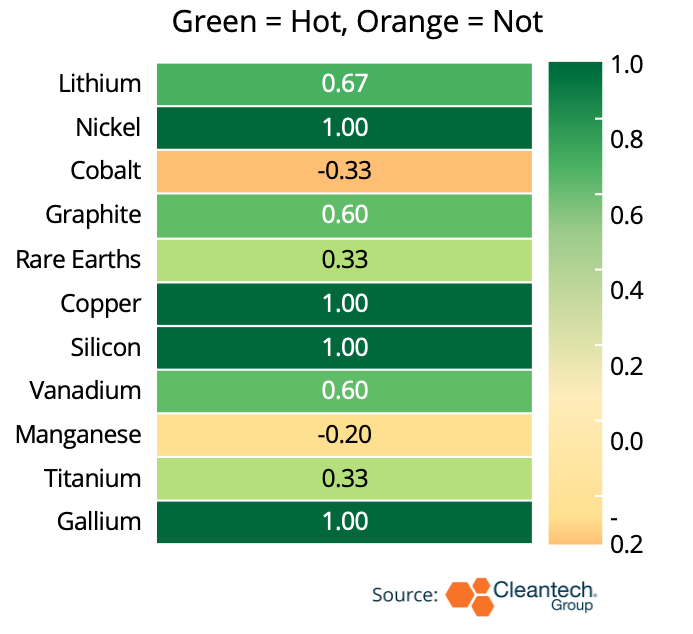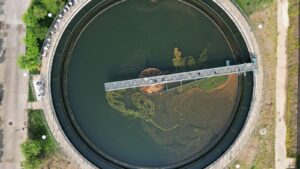Let’s Get Critical
Chances are, you’re reading or watching this blog from the comfort of your smartphone or laptop—devices powered by rechargeable batteries, connected through a vast and evolving network of grid infrastructure. What do all these technologies have in common? They depend on critical minerals and metals—essential materials at the heart of every link in the energy and power value chain.
In this short video blog, I chat with my colleague, Research Associate Buff Lopez, to discuss the latest insights from our ongoing work in the critical minerals space and why this sector is gearing up to be one of the most interesting problems and opportunities this year.
A few highlights we touch upon:
What does it mean to be critical?
Let’s take copper as an example, a metal known for its excellent electrical conductivity, corrosion resistance, and ability to facilitate rapid heat transfer. Both the clean energy transition and defense sector can agree on its importance. A standard 3MW wind turbine contains roughly 4.7 tons of the metal and it’s the second most used material by the U.S. DoD. But when it comes to things like graphite, silicon, or gallium, the answers vary.
To quote our own Anthony Vicari, “I think all of the above are, in some sense, undervalued.”
Is the critical minerals space VC backable?
Absolutely yes and it needs attention now, more than ever. However, it means addressing a lot of common expectations that are associated with venture capital and how they may or may not align with some areas of the critical minerals value chain. Regardless, some of the biggest moves we’ve seen in the news as of late in terms of investments are within the critical minerals space (from a $537M Series C to Kobold Metals back in January to a recent $500M deal between Apple and U.S.-based MP Materials).
Why does Oil & Gas care about lithium all of a sudden?
Chevron, ExxonMobil, and Equinor have now all put their flag in the brine at Arkansas’s Smackover formation for lithium. From our vlog, Buff notes, “This is actually a really natural extension of the oil & gas portfolio moving to diversify their energy portfolios.”
Even within our own Cleantech Group, we all have different viewpoints on this sector based on our backgrounds and research focuses. So, we challenged a few with the same Hot or Not activity.
Net Analyst Sentiment Score

Parker Bovee (Waste and Recycling) on Graphite (Not):
“Very similar market compared to lithium, but margins are so bad it may not even make sense to on/nearshore it. There is an argument to be made for still trying to bring it domestic since China controls 90%+ of the entire value chain but it has yet to be valued highly enough to motivate anyone to disrupt this.”
Sunena Gupta (Resources and Environmental Management) on Lithium (Not):
“I think there are potential overpromises on finding new lithium resources.”
Buff Lopez (Materials and Chemicals) on Gallium (Hot):
“The semiconductor is a core component of the digital age, think solar panels, EVs, computers, etc. But the metals required all face severe shortages, especially gallium which is 90% processed and refined in China.”
Zainab Gilani (Energy and Power) on Vanadium (Hot):
“Vanadium’s infinite recyclability and potential for leasing make it a compelling option—particularly in China with its domestic supply chain—but high costs still limit competitiveness with lithium. A hybrid vanadium-lithium storage system could optimize performance by using lithium for rapid response and vanadium for long-duration storage. Additionally, electrolyte leasing models can bring the upfront costs of batteries down and potentially shield customers from the volatility of vanadium prices.”
Diana Rasner (Group Lead) on Rare Earths (Hot):
“There aren’t mines for rare earths the same way you’d think of things like iron, copper, or tin. They’re literally everywhere (ironic considering it’s called “rare”) in all sorts of different ores and rock within the earth’s crust, just at low concentrations.
The ability to get to them, let alone process and refine them, makes rare earth production a matter of scale and further precision to separate, leads to their high costs. Digitization, the clean energy transition, our modern-day luxuries of electronics and LCD screens are not possible without rare earths and we’re only going to need more of them as time goes on.”
What other minerals/metals would you have added to this list?
_Have your own Hot or Not opinion?
_Want to learn more about our research or talk to us about innovations you’re working on or following?


